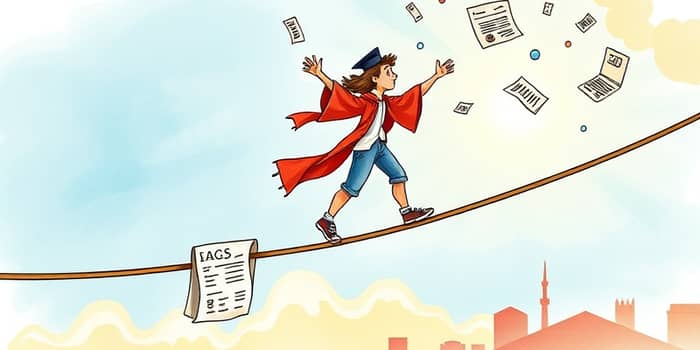
Facing tens of thousands of dollars in debt can feel overwhelming, but with the right strategies, you can regain control and pave the way to financial freedom.
In 2025, U.S. student loan debt stands at an astonishing $1.77 trillion total, with federal loans making up over 92% of that burden. Since 2007, this figure has roughly tripled in size, saddling 42.7 million Americans with balances that affect every stage of life.
Delinquencies surged in early 2025, with an 8% spike in late payments, up from 0.8% just months before. Federal default rates hover near 4.86%, while private loans sit at 1.61%. These numbers underscore the urgent need for actionable solutions.
Beyond the numbers, student loans shape life choices. Many borrowers delay milestones like home-buying or starting families and postpone retirement savings to meet monthly payments.
The psychological toll can be just as significant: stress, anxiety, and a constant feeling of being trapped under an ever-growing balance. Recognizing these pressures is the first step toward breaking free.
Conquering student debt requires a multifaceted approach: boosting income, cutting expenses, and making targeted payments that reduce principal and interest.
Consider refinancing high-interest private loans if you qualify for a lower rate. However, weigh this against losing federal protections like deferment and forgiveness options.
Federal borrowers have access to programs that can erase balances after years of service or hardship. Key options include:
Private loans generally lack these relief paths, making it crucial to keep those payments current or explore alternative assistance through your lender.
Real-life experiences show that creative approaches can deliver rapid results:
Emma’s Accelerated Payoff
After graduating with $45,000 in debt, Emma launched a digital marketing side business. By dedicating 30% of her monthly revenue to loans, she cleared her balance in just two years and gained the confidence to automate savings and investments.
Marcus’s PSLF Triumph
As a public health worker, Marcus leveraged PSLF. He meticulously tracked payments, navigated paperwork, and saw his remaining $60,000 wiped out after ten years, freeing him to pursue graduate studies debt-free.
Sophia’s Prevention Plan
Before enrollment, Sophia compared financial aid offers across public and private schools. By choosing a state university, working part-time, and living at home, she graduated with just $12,000 in loans.
Prospective students can minimize future debt through careful planning. Key questions to ask before signing any loan agreement:
• Does the school offer robust scholarships or grant opportunities?
• What is the projected return on investment for your chosen degree?
• Can you work part-time or secure a cooperative education placement?
By treating college financing as part of your overall career strategy, you avoid unnecessary borrowing and build a stronger financial foundation.
Professional guidance can simplify complex repayment and forgiveness processes. Consider:
Additionally, federal websites and community organizations host webinars and workshops to help borrowers navigate challenges.
Student loan debt doesn’t have to be a lifelong burden. With actionable planning, targeted payments, and the right support, you can transform a daunting balance into a powerful step toward financial independence. Start your journey today and keep moving forward—debt survival is within your grasp.
References













